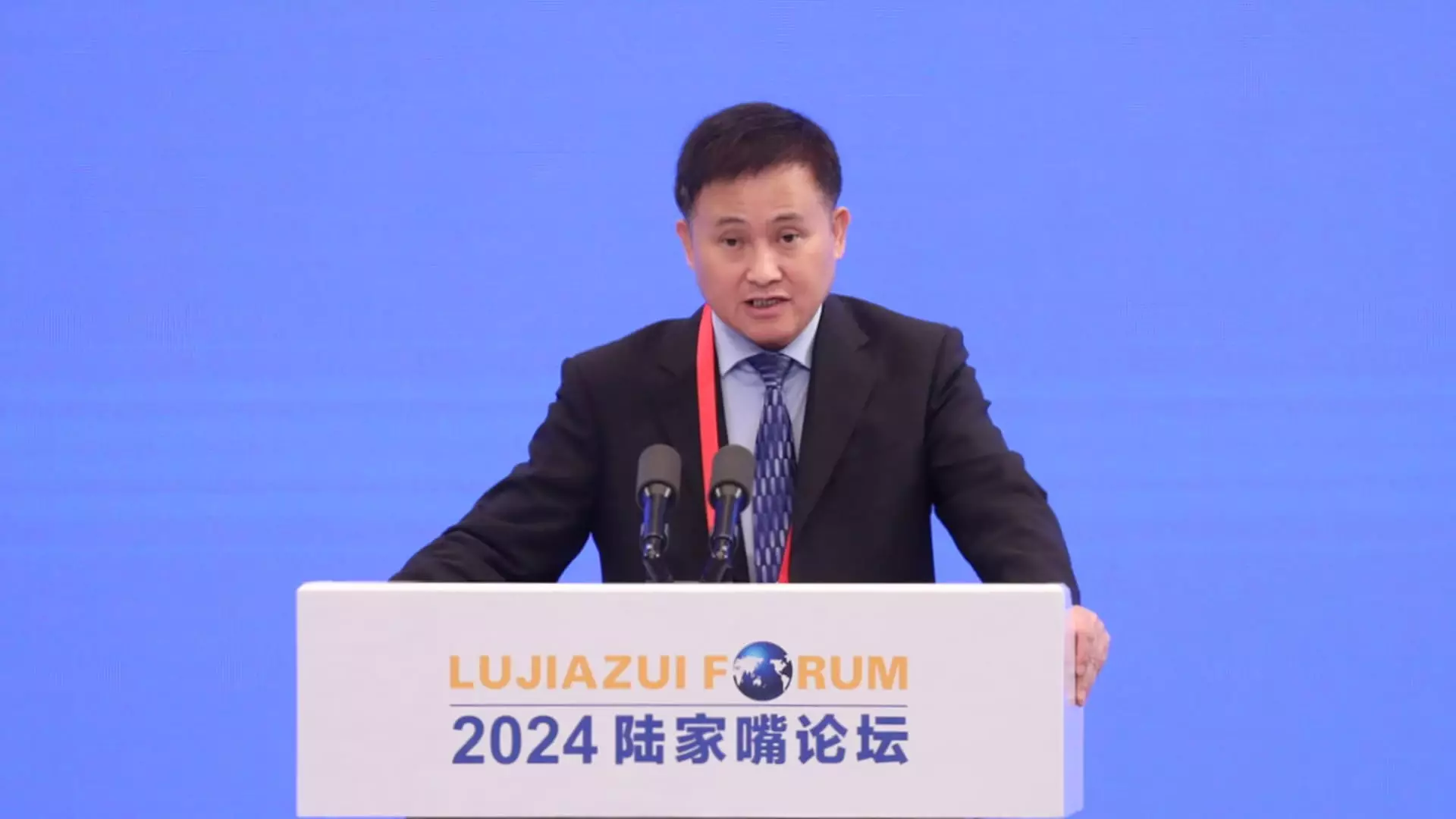In a significant move signaling an effort to counteract economic stagnation, the People’s Bank of China (PBOC) announced a reduction in the reserve requirement ratio (RRR) for banks by 50 basis points. This policy adjustment, articulated by Governor Pan Gongsheng during a high-profile press conference, reflects the central bank’s response to various economic pressures, including deflation and sluggish growth. Despite the explicit details of future adjustments remaining under wraps, this announcement fosters a sense of anticipation in financial markets, paving the way for a broader discussion on China’s monetary policy landscape.
The reserve requirement ratio is a critical tool used by the PBOC to manage liquidity within the banking system. A 50 basis points cut indicates that banks will have more cash available to lend, theoretically stimulating economic activity. Pan hinted at the possibility of further reductions later in the year, maintaining a strategic ambiguity regarding future moves. The statement that the central bank would reassess its approach based on evolving economic conditions underscores a proactive stance aimed at economic stabilization.
A notable aspect of this monetary easing is the simultaneous reduction in the 7-day repo rate by 0.2 percentage points. A decrease in this key interest rate may encourage borrowing and investment, enhancing liquidity in the financial system. Such measures are crucial as China grapples with factors inhibiting growth, particularly the ongoing downturn in the real estate sector, which has had a profound impact on consumer confidence.
The timing of the PBOC’s announcement is particularly salient given the recent interest rate cuts by the U.S. Federal Reserve. This external development creates a unique backdrop for China’s monetary policy, offering the PBOC additional leeway to implement necessary reductions without significantly affecting the yuan’s value. Moreover, as the U.S. signals a shift in its monetary policy, the attached risks for emerging markets, including China, must be carefully navigated.
The PBOC’s choice to maintain a variety of interest rates rather than focusing solely on a single benchmark sets it apart from many global counterparts. This multifaceted approach allows for targeted measures to stimulate specific segments of the economy while managing overall financial stability. However, the lack of clarity regarding the loan prime rate (LPR) cuts raises concerns, as the LPR serves as a determinant for loans to both households and businesses.
Despite these monetary maneuvers, China’s economic recovery faces formidable challenges. The slowdown in growth, exacerbated by the real estate crisis and waning consumer sentiment, has led to increasing calls for more aggressive fiscal stimulus measures. Analysts are closely monitoring how the PBOC will balance monetary easing with existing structural economic issues.
Furthermore, the reliance on credit and increasing debt levels prompting growth have raised questions about sustainability. Many economists argue that while short-term monetary easing can prompt a temporary uplift, it may not conclusively address the underlying systemic issues that require more profound reforms within the economy.
The PBOC’s vision moving forward will likely incorporate a broader strategy, balancing immediate economic stimulus with long-term structural changes necessary to build an adaptable and robust economic framework.
The recent decisions made by the PBOC signal an awareness of the necessity to adapt monetary policy to an evolving economic landscape. While the reserve requirement ratio cut presents an opportunity for banks to foster growth through increased lending, complications rooted in the real estate market and shifting global economic aspirations linger. China’s financial regulators must now fine-tune a responsive policy framework that considers both external pressures and domestic economic realities. As the world watches, the choices made in the coming months will be pivotal in shaping China’s economic trajectory.

Leave a Reply